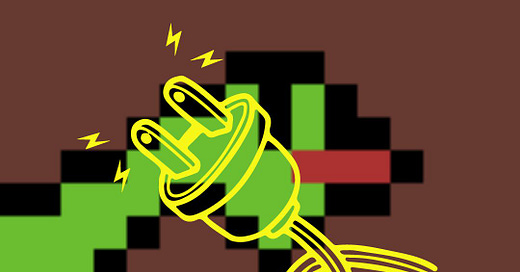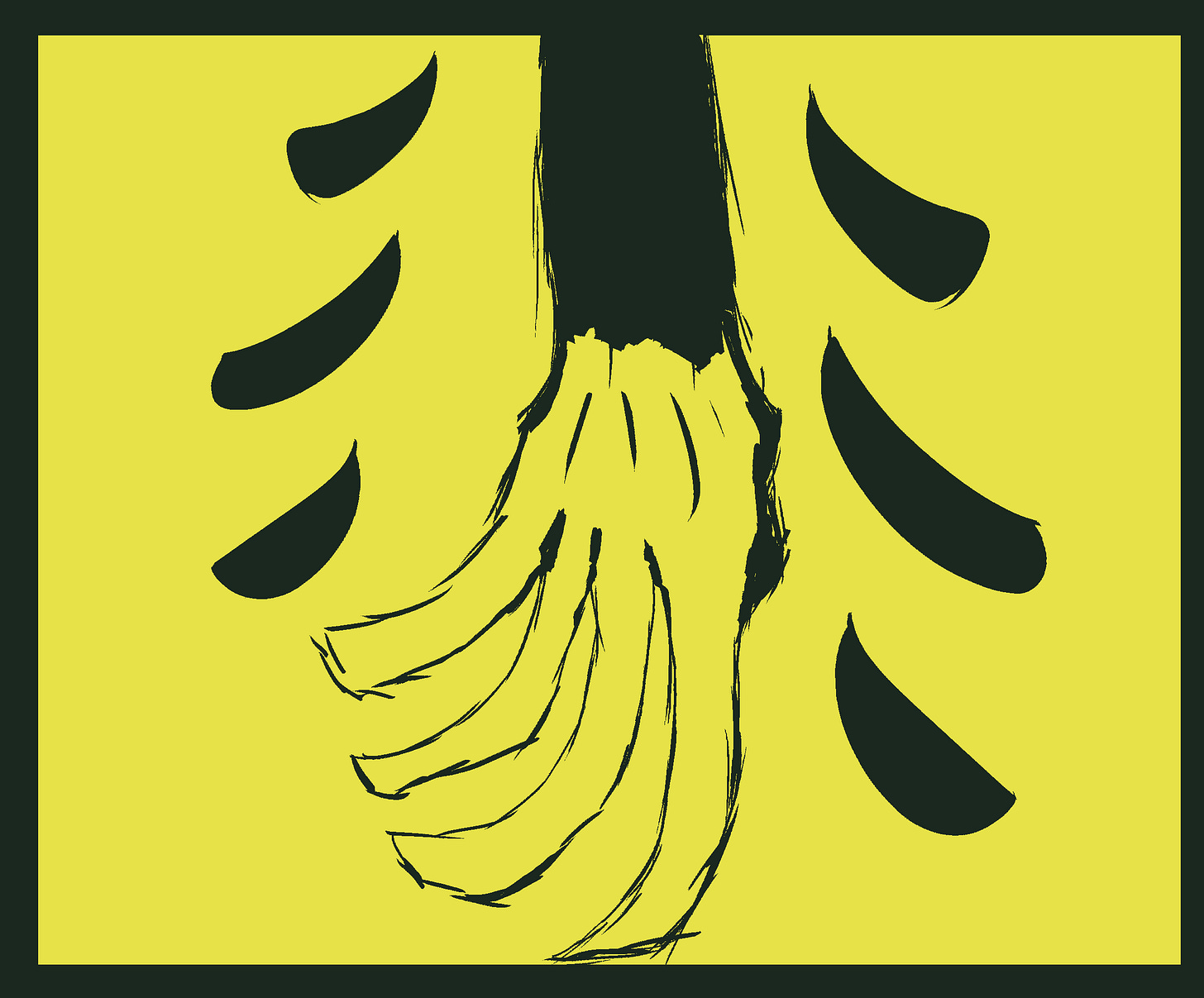Transmission 23.1: TIME TRAVELING RESTAURANT I
Here come insights and behind-the-scenes from our futures practice! A glimpse into our uncommon perspective and approach, to keep updated or to know what to expect when time traveling with us.
This transmission is about Catacumbias, the first time traveling restaurant in the world, located in downtown Chicago. Part 1 out of 2.
We are breaking this case into 2 transmissions, to be broadcasted as follows:
23.1 Thursday June 8th
23.2 Wednesday June 21st
As part of the Interactive Arts and Media (IAM) curriculum at Columbia College Chicago, The Time Travel Agency alongside Lauren Liss taught a semester of futures design, rapid prototyping, and experience design to a group of newcomers to the discipline.
The goal of our partnership was to welcome IAM students to futuremaking and to experimental methods of design, so they could see possibilities of implementing futures design in their chosen fields of work. Together with Lauren we imagined 12 weeks of theory, exercises, rapid-prototyping of experiences, and working towards exhibiting our creation during Manifest, Columbia’s annual festival that showcases graduating student work.
Opening the first time traveling restaurant in the world was a wonderful–unknown arrival, yet the most interesting aspect of the Columbia case was how learners became acquainted with the discipline, including obstacles to entry. Their acquaintance is what we’ll look into the most in these two transmissions.
In both transmissions we’ll look at what was created alongside lessons, insights, and discoveries. The transmissions can be read sort of like journal entries about the time when a few newcomers to futures design faced an unknown discipline as a team, and experimented with it until they created something that mattered to them.
Of course, anyone interested in dining at Catacumbias could also find something for themselves here ;) Off we go!
Catacumbias is the first time traveling restaurant in the world, located in downtown Chicago.
Once in downtown Chicago, you have to go underground to time travel. This also means you have to go “underground of yourself”, which is a poetic way of saying that both time traveling and futures design are quite introspective activities.
1. The first challenge our newcomers faced was to talk (and to know what to talk about).
Frequent travelers or transmission readers know that our approach is heavy on story, and that conversing is a method of working.
We’ve learned it’s overwhelming for some to be invited to a moment where inventions are happening as we communicate (or because we communicate).
Ours was a practical class of “pre-design”, so a solution based in practice emerged where a few dynamics similar to Event Scores (which we mentioned during our most recent time in California) came to delete the impulse of having a “mirror conversation” (i.e. to resist the impulse to ask “And you?” in dialogue instead of jumping to another question and keeping it divergent). Formulating curious questions is an important early step to learn, so we added that in.
Here’s an example of a dynamic called ‘The Play’, happening between 2 people plus an “audience”:
At the end of the score, the audience (people who didn’t participate in the conversation) was asked what the play was about. Here are some answers for this specific dynamic:
"The Play is to discover people, life, what we experience, and what we create. It shows that everyone has they path but sometimes we crossover. We create a moment and we can image something new. It dives into being aware of one another and being comfortable with what’s being discussed. It is about two strangers sharing their worlds, embracing awkwardness and openness to form a new bond. There was an exchange of ideas, memories, and perspectives. The Play is used so we build on each other.”
These activities made about 50% of our time together. They were grouped under the following thorough and excellent category: "unrelated activities that open the imagination and connect to the inner child, disconnect from the lower reality, and discover the world and ourselves, so that when we meet to ‘make’ (the other 50% of our time) we improvise, focus on the moment, prototype, and let go until next time.”
Catacumbias does not have any conversation dynamics in its menu; they remain in the kitchen.
2. Rapid prototyping was the prompt that included the production-oriented most successfully.
Every time we had enough stories (which comes easy to some), we turned to the builders, who were focused on “making the stories”, as they named the task.
This team was made of service designers, graphic designers, game designers, programmers, communicators, product designers, writers, and industrial designers. In our experience, multidisciplinary teams keep proving to be the perfect candidates for futures design.
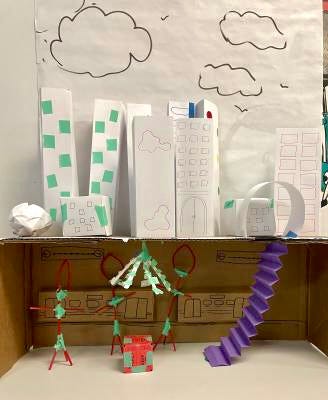

After prototyping, graphic designers, 3D people, and game designers had material to work on. The transition from story to paper to image was the turning point.
Their direction was to explore speculative containers, concepts that already exist in our world where we can place our inventions. In this case, in a manner that has become futile to explain with text, we arrived to the concept of Restaurant!
Someone said “Our container must be an unreal real sum of all the individual elements we'll produce”, and we agreed with this formula.
It’s worth mentioning that at this point in the process we were making a deep game as well as an intervention to feel optimistic about the future, so a restaurant became “the space one would navigate on a quest to try a few dishes and feel incrementally better about the future”.
Here is a rapid prototype of the videogame element of the intervention. We also call it ‘rapid’ because it came so quickly to the game designers. This is ‘Alien in restaurant’:
In turn, the videogame prototype became a guide for brand designers and experience designers, the last team members to enter the process with agency.
Once the experience had a gameflow, the experience designers could imagine what could happen irl in each step, from proceedings to interior design, for instance:


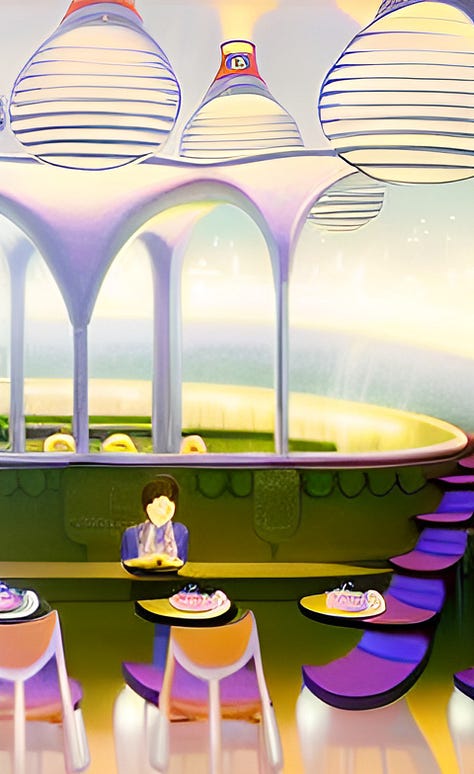
3. Accessibility and other invisible elements of design included our audience.
A 3- and a 5–course menu were designed considering these invisible design elements:
Intuitive navigation (clear signage, logical flow of spaces);
Seamless integration of technology (a time travel restaurant would likely require the use of technology to create a convincing and immersive experience; tech should enhance the experience without drawing attention to itself; interactive displays or holographic projections could create the illusion of different eras and stations without disrupting the flow of the dining experience);
Ergonomic furniture (to allow guests to engage with the space without feeling discomfort or strain; chairs and tables adjustable to accommodate different body types, abilities, and dining preferences);
A cohesive aesthetic (pleasing to the eye while enhancing the experience);
Thoughtful lighting (to influence mood and perception of a space; dim lighting to create a cozy and intimate atmosphere where to discover and communicate);
Dishes with multiple meanings or layers (dishes that deliver “mental health umami”).
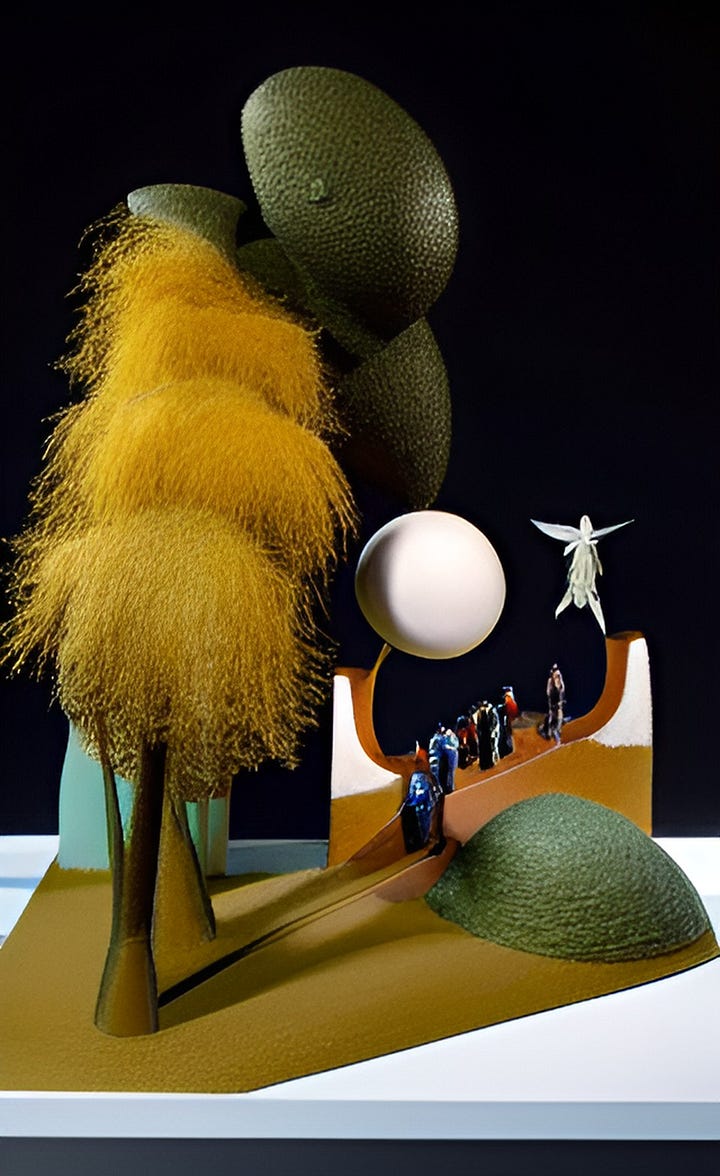
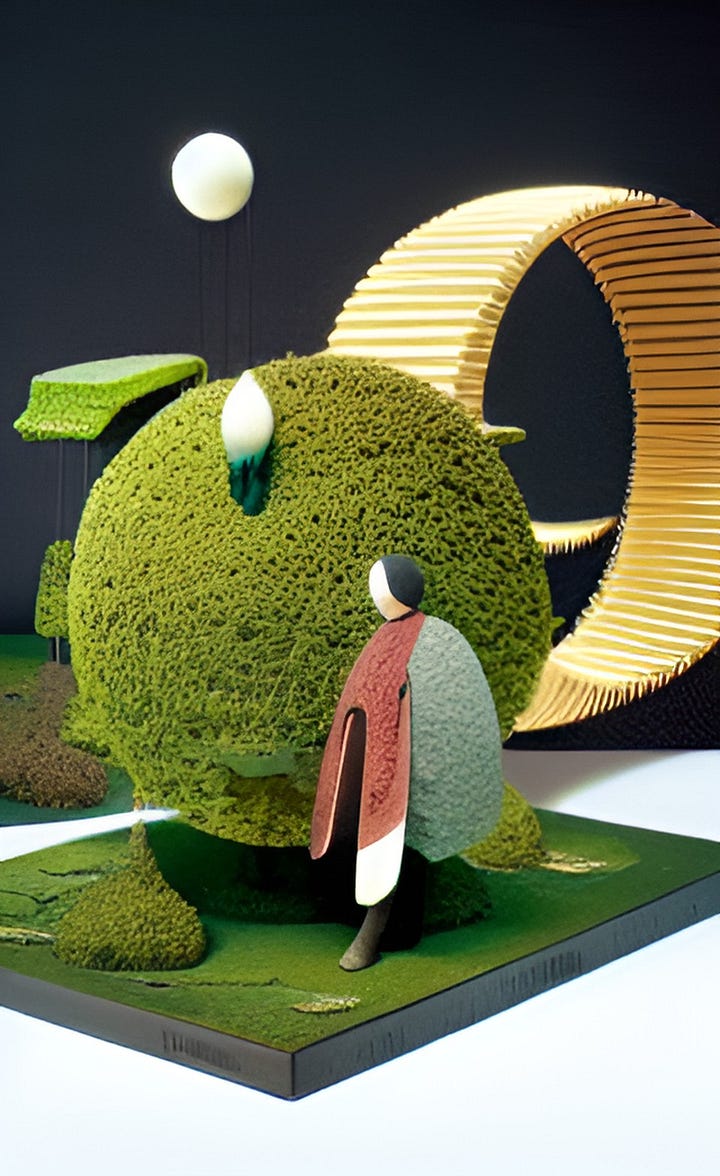
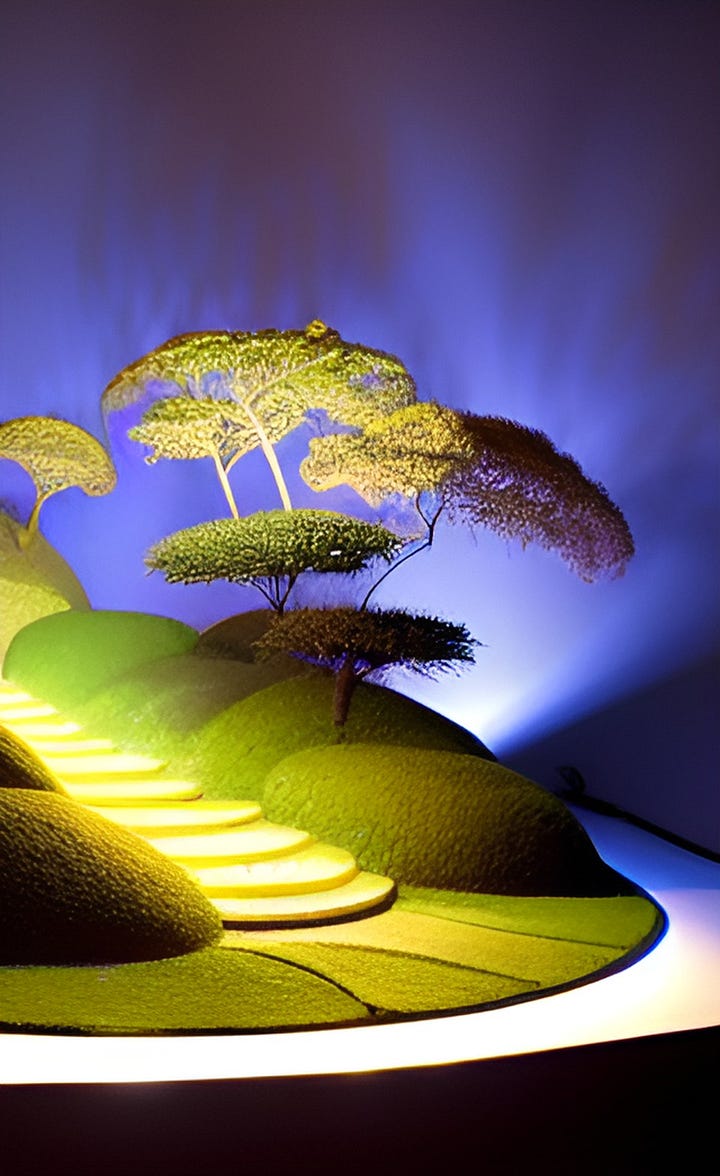
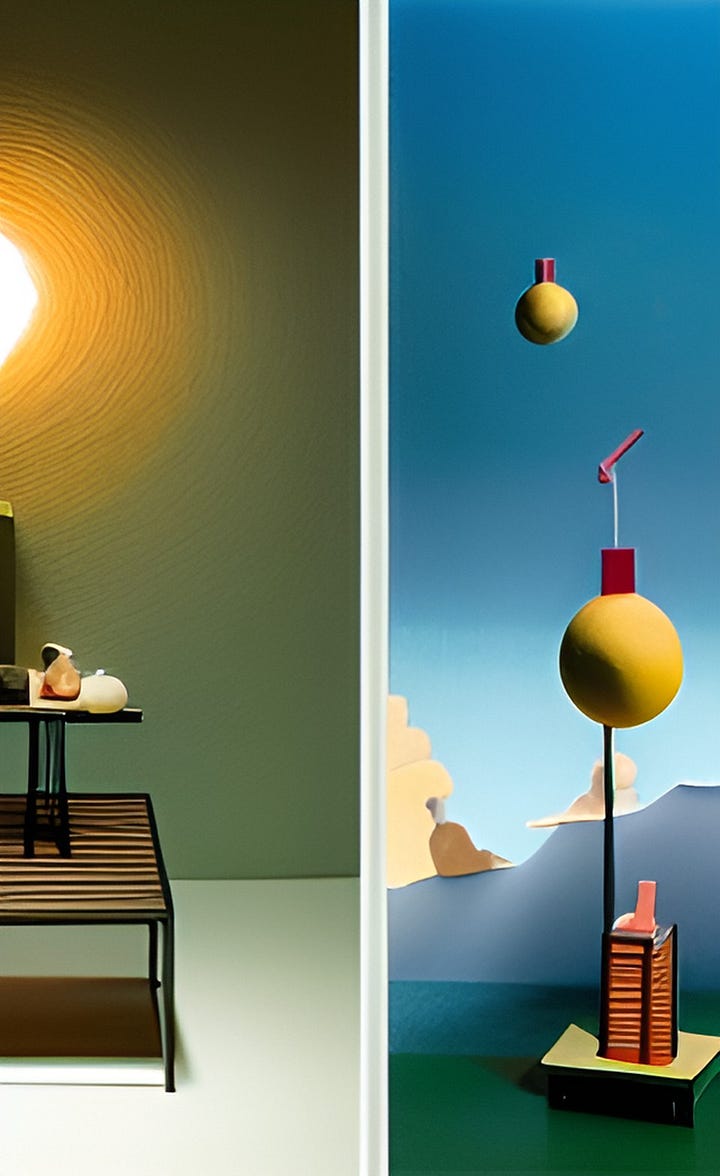
We also found problems to look out for:
Lack of cohesion in design > We must ensure that the restaurant's design elements (furniture, lighting, flow, app, menus, utensils) are working together to create an immersive experience.
Inconsistent execution of the time travel theme > Every table should feel connected to the time travel concept.
Lack of accessibility and inclusivity > All areas of the restaurant should be accessible for people with varying abilities and disabilities; the menu should offer options for people with dietary restrictions or time travel preferences; we must offer menus in multiple languages.
By creating a space and an experience that are functional, beautiful, and meaningful, this team’s intention was to help people feel more capable, confident, and in control of their surroundings and themselves, present or future.
At this point we had familiarity with the discipline and approach, branding, interior design, experience design proceedings, and even a videogame prototype.
On the next transmission: Experience design at Catacumbias for opening night.
See you on Wednesday June 21st!
Time travel with us
We are a speculative design and innovation studio helping to build futures where people feel happy to be alive. Our services in discovery and front-end innovation allows us to develop and implement new products, services, and processes; help organizations of all sizes to be at ease with a changing present or future; and facilitate imaginative experiences that drive growth.
If what we do resonates with you or one of your peers get in touch through this form and let’s explore dreaming and building together.

